World Records
World’s Widest Wig
At what point is a wig no longer a wig?More info: upi.com

Posted By: Alex - Thu May 30, 2024 -
Comments (4)
Category: World Records, Headgear, Hair and Hairstyling
Miniature Golf Record

Page 18 of Pawtucket Times, published in Pawtucket, Rhode Island on Tuesday, November 4th, 1930



Posted By: Paul - Thu May 30, 2024 -
Comments (0)
Category: Sports, World Records, 1930s
Sailor, the World Record Frisbee Dog
An article here.
Posted By: Paul - Wed May 29, 2024 -
Comments (0)
Category: Sports, Toys, World Records, Dogs, Twenty-first Century
Gilbert Young, most rejected author ever
Gilbert Young first came to the attention of the British press in the 1960s as a crusader for a single world government. He ran repeatedly for various political offices but never won an election.Below is an ad he placed in the papers seeking new members for his "World Government Party."

Bristol Daily Press - Jan 29, 1964
But his real claim to fame came in the mid 1970s when the editors of the Guinness Book of Records learned that, for years, Young had been trying to get his book published but had only received rejections from publishers. His book, World Government Crusade, had, by 1974, been rejected 80 times. So Guinness listed him in its 1975 edition as the record holder for the "greatest recorded number of publisher's rejections for a manuscript."

Bristol Daily Press - Sep 26, 1974

Guinness Book of Records 1975
For over fifteen years Guinness continued to list him as the holder of this record. Every few years it would update the number of his rejections. By 1990 his book had been rejected 242 times.

Guinness Book of Records 1991
I thought that perhaps Young's book would now be available to read or purchase somewhere on the Internet. But no, as far as I can tell it's still unavailable.
Posted By: Alex - Tue May 14, 2024 -
Comments (3)
Category: Eccentrics, Politics, World Records, Books
Harmonica Record
Obscure world record: longest time playing the harmonica while sitting in a chair balanced on top of three wine bottles. Set by Michel Perrigaud in 1959, who played for seven-and-a-half hours.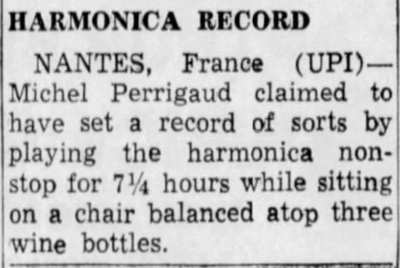
Albuquerque Journal - Jan 29, 1959
Posted By: Alex - Mon Apr 08, 2024 -
Comments (1)
Category: Music, World Records, 1950s
Tibor Sarossy’s Cannonball Run
In late August of 1968, 22-year-old Tibor Sarossy set a record by riding a motorcycle from New York to Los Angeles in 45 hours, 41 minutes. He had rigged up extra fuel tanks on the back of his bike so that he only had to stop for gas four times. Also, he wore a condom connected to a hosepipe to avoid stopping for bathroom breaks.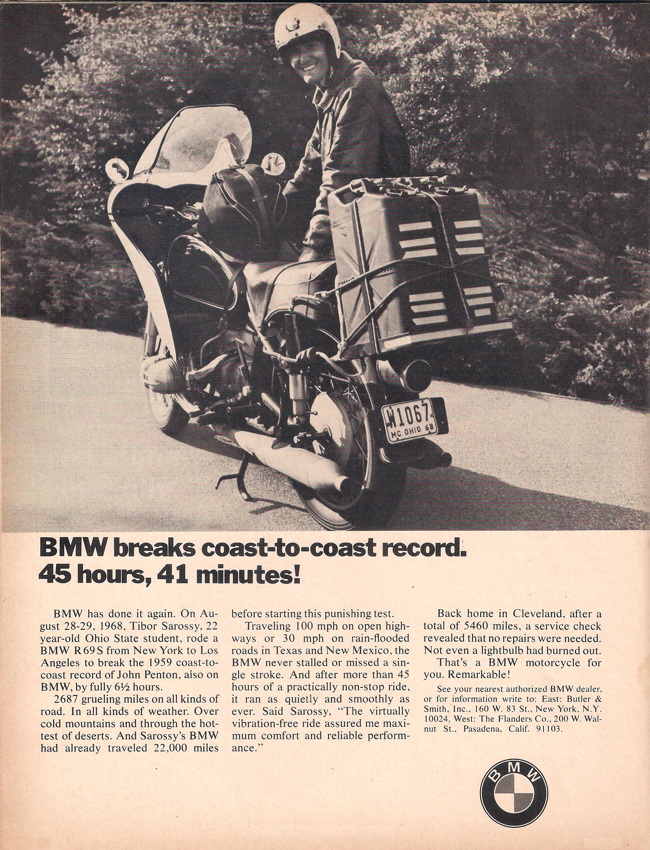
Attempting to set a speed record for driving across the United States is known as doing a Cannonball Run. The term traces back to 1914 when Erwin Baker was nicknamed "Cannonball" by the media after he drove his motorcycle coast-to-coast in 11 days and 11 hours. That may seem slow today, but it was before modern highways and widely available gas stations. So, for the time and driving conditions, it was incredibly fast.
The current motorcycle record for a Cannonball Run is 32 hours, 27 minutes set by Felix Hofmann in October 2023.
More info: LPMCC.net
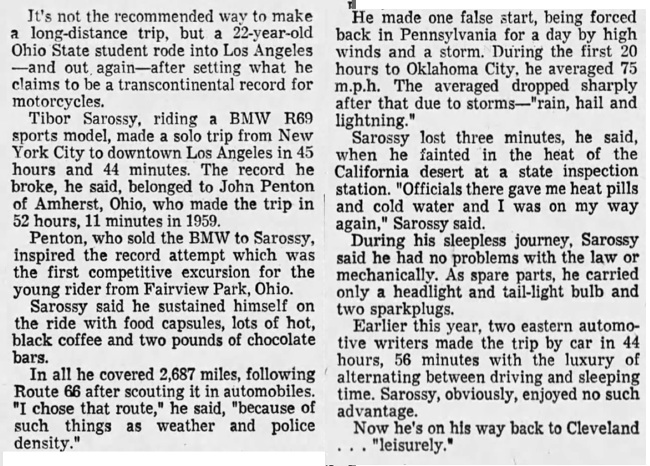
Los Angeles Times - Sep 8, 1968
Posted By: Alex - Wed Jan 03, 2024 -
Comments (1)
Category: World Records, 1960s, Motorcycles
Competitive Hymn Singing
In 1972 a group of schoolboys set a world record for "non-stop hymn singing." They sang for 48 hours straight.So what's the current record for hymn singing? I haven't been able to figure that out.
I found an article from Oct 2005 claiming a new record was set for singing for 22 hours, but since that wasn't even half the time of the 1972 record, that can't be right.
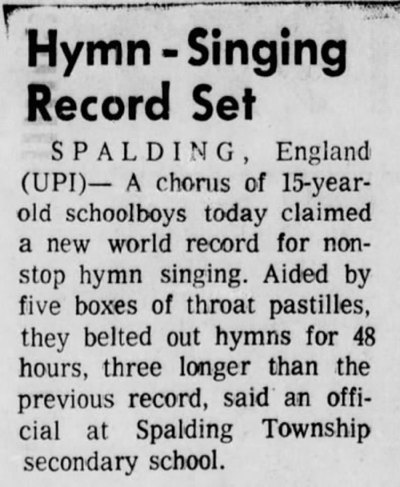
Pomona Progress Bulletin - Dec 30, 1972
Posted By: Alex - Thu Nov 16, 2023 -
Comments (1)
Category: Music, World Records, 1970s
Largest Dripping Candle Known


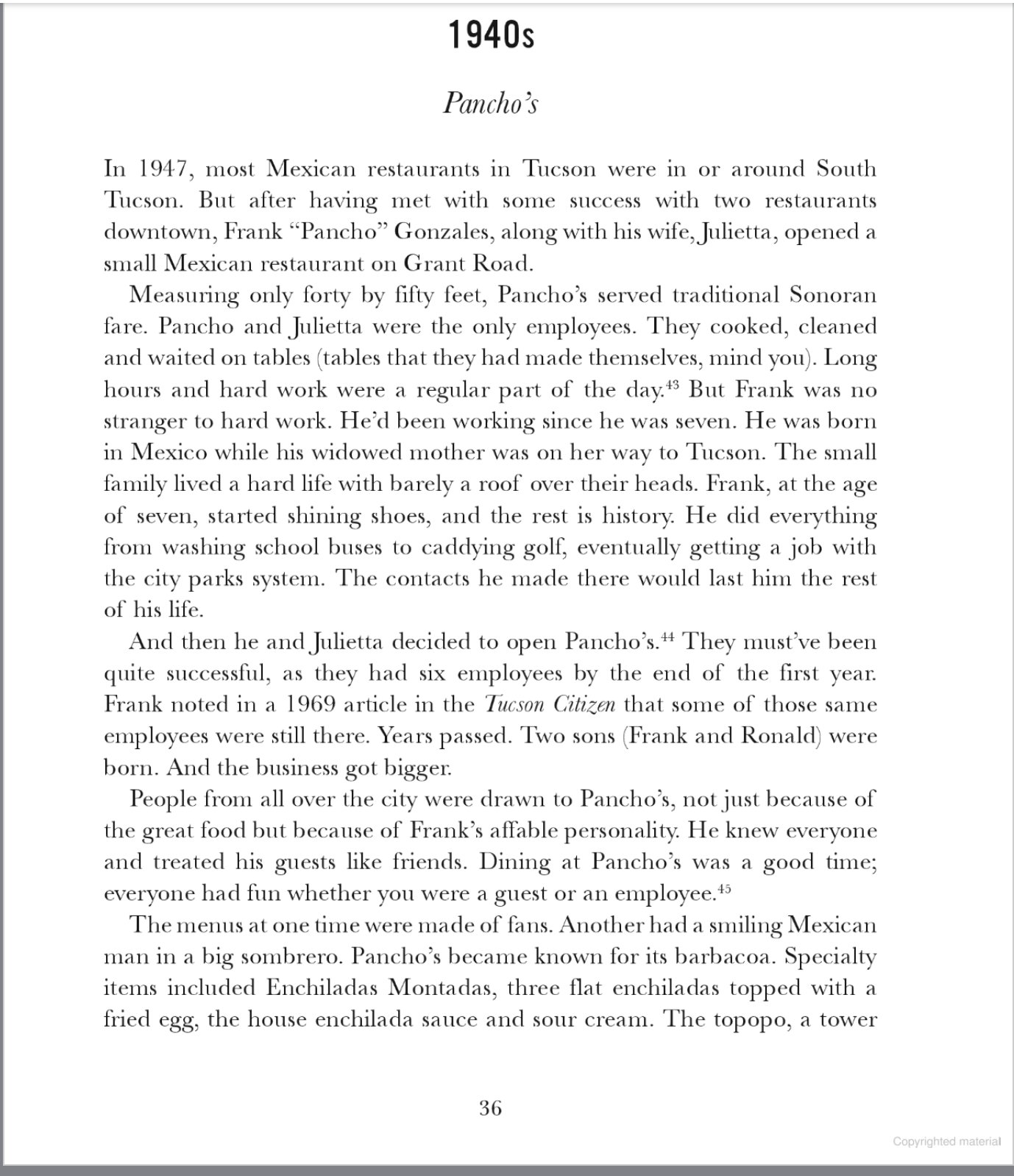
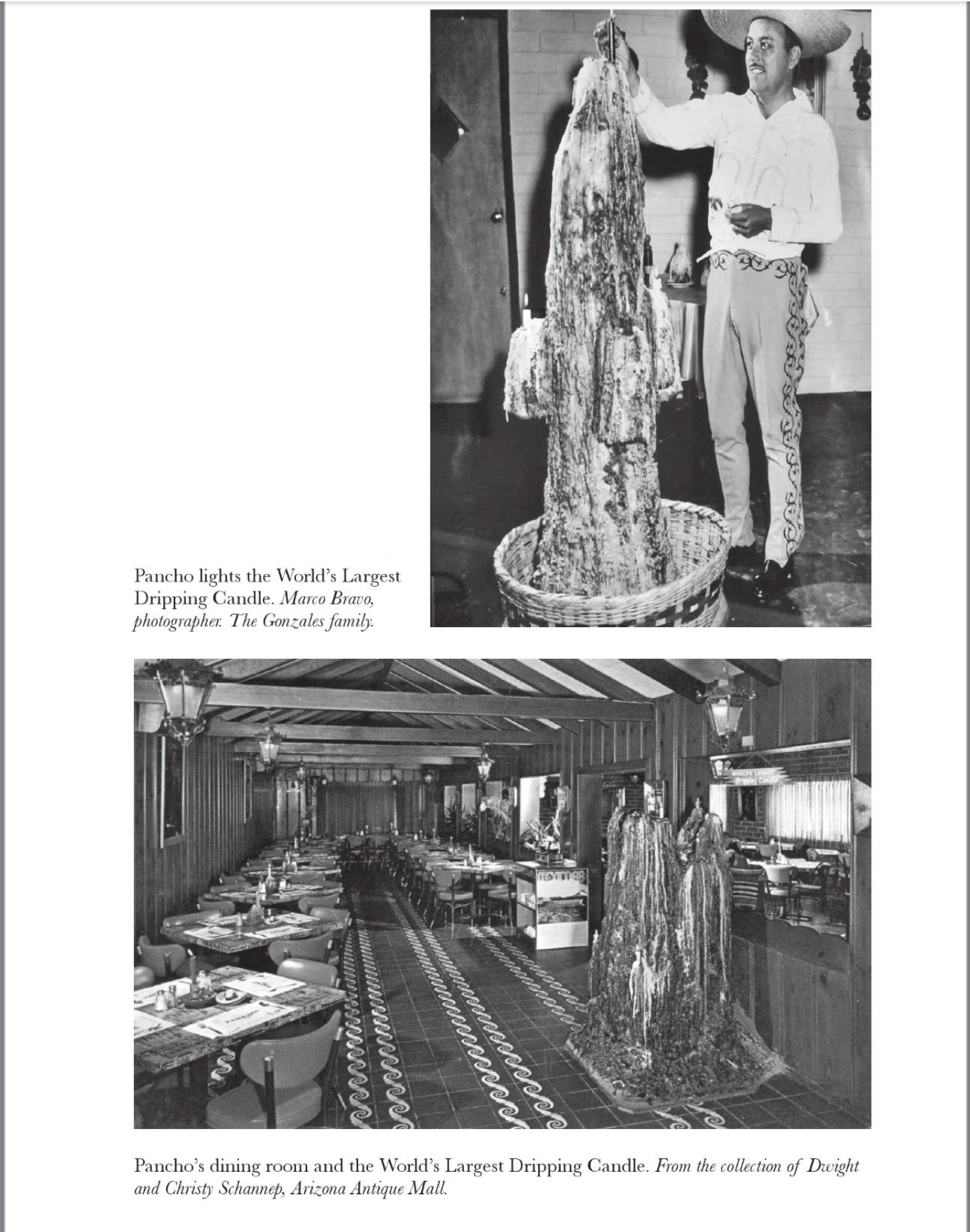
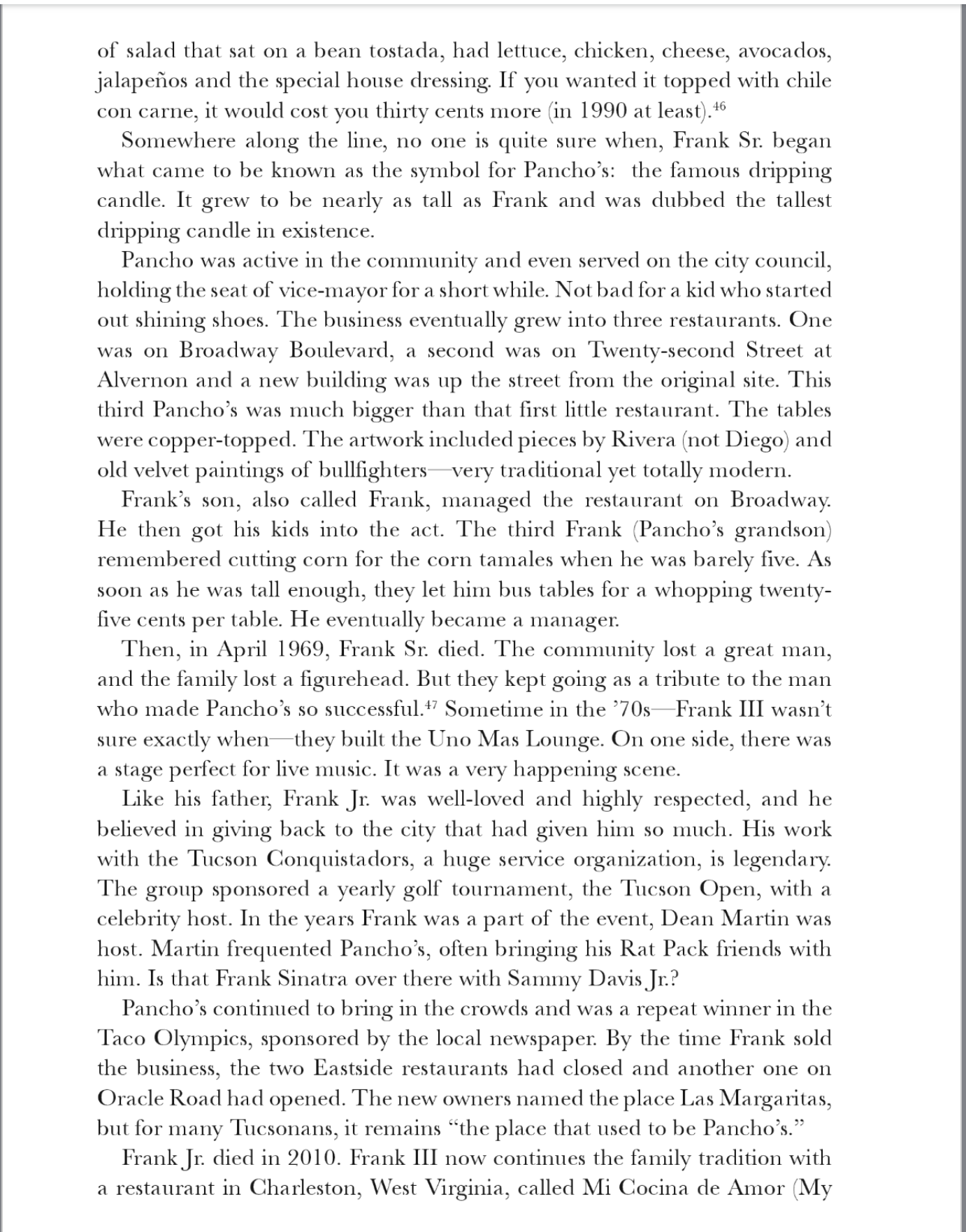

Posted By: Paul - Sun Jun 04, 2023 -
Comments (2)
Category: Excess, Overkill, Hyperbole and Too Much Is Not Enough, Restaurants, World Records, 1940s
Gus Comstock, Champion Coffee Drinker
Gus Comstock of Minnesota set a record back in 1927 by drinking 85 cups of coffee in 7 hours and 15 minutes.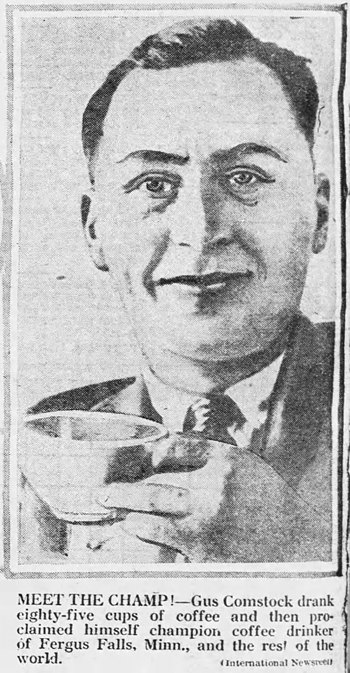
Bridgewater Courier-News - Jan 18, 1927
Others subsequently claimed to have beaten his record. Albert Baker of San Francisco claimed to have drunk 157 cups of coffee in 6 hours 20 minutes. However, Comstock complained that there was nothing official about his challenger's claims. They just said they had beaten his record. And Comstock ended up being the most well-remembered champion coffee drinker. Stumbeano's Coffee Roasters (located in Comstock's home town of Fergus Falls) now sells a "Gus Comstock Blend" of coffee.
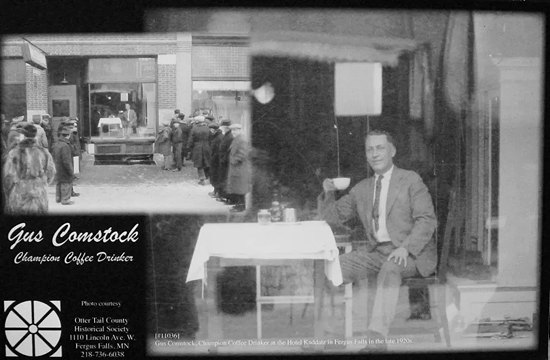
source: stumbeanos.com
I haven't been able to find any more recent coffee-drinking records. Probably because drinking that much coffee has to be potentially lethal.
Back in my twenties I used to regularly drink 3 or 4 cups a day. Nowadays I limit myself to one cup in the morning.
More info: clickamericana.com
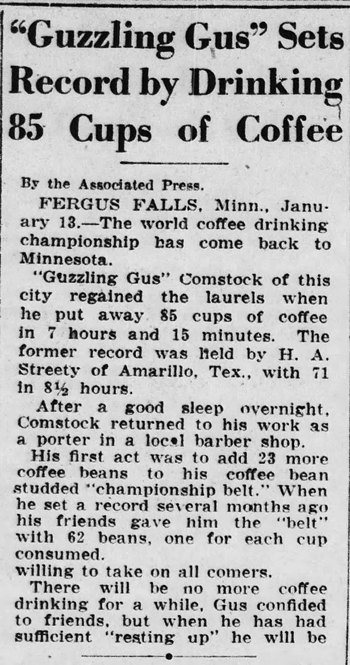
Washington Evening Star - Jan 14, 1927
Posted By: Alex - Tue Jan 03, 2023 -
Comments (6)
Category: World Records, Coffee and other Legal Stimulants, 1920s
Mr. Plastic Fantastic
Walter Cavanagh's hobby is collecting active credit cards issued in his name. Which is to say that he's not interested in collecting the cards themselves, as a typical credit card collector might be (such as a member of the American Credit Card Collectors Society). Cavanagh's collection consists entirely of cards that he could use to buy something.By the mid-1970s, when the media first got wind of him (and dubbed him 'Mr. Plastic Fantastic'), he had already acquired 788 cards, giving him available credit of $750,000.
By 2016, in the most recent update about him that I could find, his collection was up to 1,497 cards, giving him available credit of $1.7 million.
However, he never taps into this credit. He uses only one card, and he always pays off the balance in full each month.
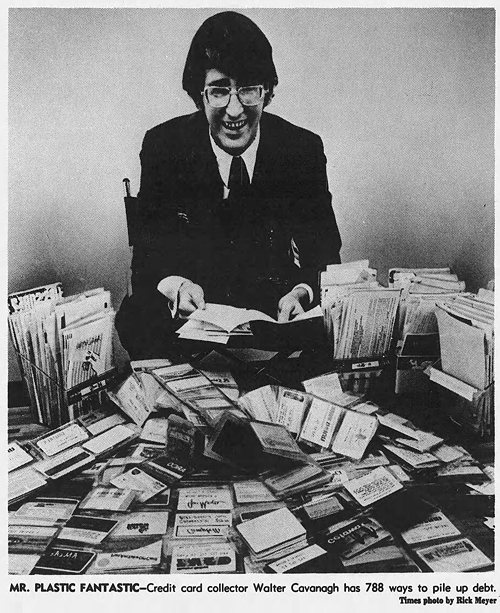
Los Angeles Times - Feb 1, 1976
But how does he keep getting companies to send him new cards? Wouldn't companies see the huge amount of credit already available to him and deny his application? Apparently not. Cavanagh reports that he's hardly ever had an application denied.
According to the Next Gen Personal Finance blog, this shouldn't be surprising. Both his payment and credit history are long and positive. Also:
So companies keep sending him new cards.

Posted By: Alex - Tue May 10, 2022 -
Comments (8)
Category: Money, World Records, Collectors

| Who We Are |
|---|
| Alex Boese Alex is the creator and curator of the Museum of Hoaxes. He's also the author of various weird, non-fiction, science-themed books such as Elephants on Acid and Psychedelic Apes. Paul Di Filippo Paul has been paid to put weird ideas into fictional form for over thirty years, in his career as a noted science fiction writer. He has recently begun blogging on many curious topics with three fellow writers at The Inferior 4+1. Contact Us |




